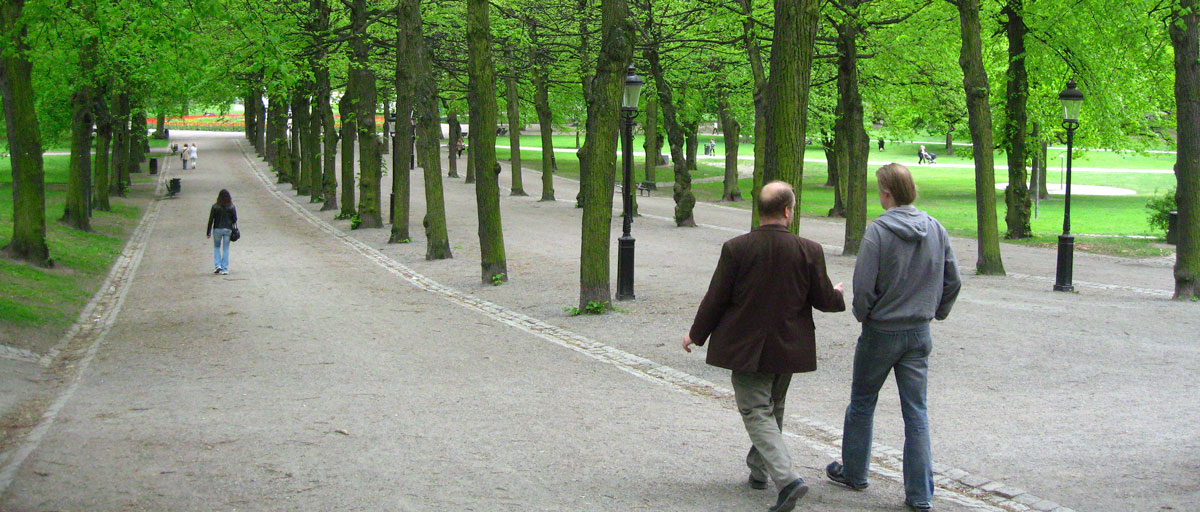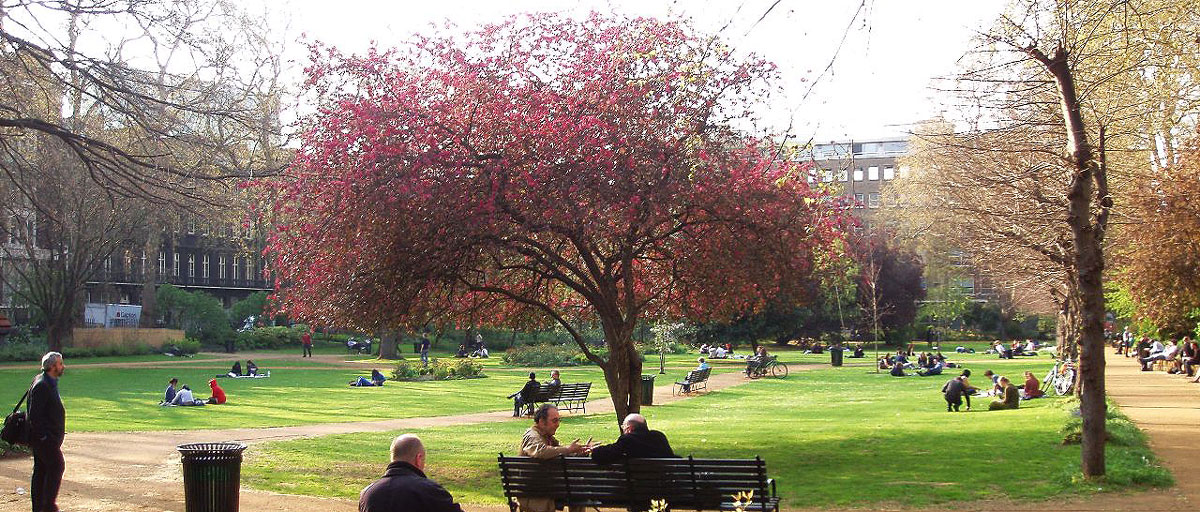
In a study recently published in the journal Habitat International, researchers argue that current ideas and practices about greening urban areas are usually perfectly adequate on environmental standards, but often fail to address social realities. Photo: M. Edström/Azote
Bildtext får vara max två rader text. Hela texten ska högerjusteras om den bara ska innehålla fotobyline! Photo: B. Christensen/Azote
Regreening urban areas
Revitalizing for whom?
Questions remain whether greening of cities actually leads to social inclusiveness. Researchers suggest six prerequisites for change
- There is a documented trend of growing inequality in many cities
- Green renewal projects usually benefit higher income residents more than others
- Current ideas and practices are perfectly adequate on environmental standards, but fail to address social realities
Show me the view of the nearest green area from your apartment window and I will tell you how privileged you are. That kind of assessment might sound all too superficial, but plenty of evidence shows that poorer areas in cities tend to have less vegetation while more affluent areas enjoy plenty of gardens and shady green areas. That is bad news for those trying to reduce social inequality. Indeed, there is a documented trend of growing inequality in many cities but the question is: will increased greening of the less affluent areas help solve it?
The answer is yes and no.
Could have opposite effect
In a study recently published in the journal Habitat International, centre researcher Erik Andersson together with an international team of researchers takes a long and critical look at greening cities and social inclusiveness.
They argue that greening strategies may cause even greater inequality among social groups rather than fostering social cohesion and inclusiveness.
A green renewal undoubtedly contributes to an increase in human wellbeing but these projects are often market-driven and benefit higher income residents. Less affluent residents are threatened by displacement
Erik Andersson, co-author
”Cleaning up and clearing out”
Erik Andersson and his colleagues point out that despite the best intentions, attempts to address the UN Sustainable Development Goal number 11 (”Make cities and human settlements inclusive, safe, resilient and sustainable”) still have a long way to go. In Europe, there are several examples of areas where green renewal has led to increased social inequality.
One is the Lene-Voigt-Park in Leipzig, Germany, which was created in 2001 in the area of a former railway station. The park quickly became a popular area and helped boost the development of residential areas and local infrastructure around the park. However, most people moving in were young families with kids and higher incomes. As a consequence, rents went from 4.5 Euro per sqm in 2000 to almost 7 Euros per month today. Moreover, the residential park surroundings became increasingly expensive forcing elderly and less affluent families to leave.

Lene-Voigt-Park in Leipzig, Germany. Photo: E. Poscher/C.C BY-SA
Another spectacular example is from Lodz, Poland, where an apartment building called Solaris not only consumed much of a nearby park but came with such high housing prices that any calculation of the impact green spaces have on real estate prices became completely unrealistic. As a consequence, the building was eliminated from pricing studies.

Solaris building in Lodz, Poland. Photo: Taken from www.skyscrapercity.com
Six prerequisites for change
So how can urban greening and renewal also spur social inclusiveness and reduce inequality? Simply planting trees and making areas green again won’t cut it, Andersson and his colleagues warn.
"We should not consider greening strategies as panaceas or silver bullet solutions in cities, but they are important parts of bigger efforts to improve social inclusion," he explains.
He points to six prerequisites for positive change to happen:
1. Future greening should focus less on middle class and high income districts that are privileged anyway
2. Planning processes should include not only different groups of actors but also different opinions and, as far as possible, contrasting views, needs and demands, including community views
3. Greening strategies and projects must be implemented to maximise social benefits too
4. Green spaces have to be located and designed in a way that makes them accessible for diverse groups. That is why different groups of people must also be included in the planning and design process
5. The management of the green areas must be based on a multi-actor structure, ranging from local authorities to residents
6. Any upgrade of an area must take into account possible side-effects such as rising living costs for those living there
Failing to address realities
Based on these prerequisites Andersson and his colleagues call for a more inclusive approach to greening cities. Expecting the ‘green’ to solve problems in and of itself simply isn’t realistic, they argue.
"As cities will be the ’human habitat’ of the 21st century we have to become more equity-oriented and inclusive in the way we design our urban green areas," Andersson explains.
Current ideas and practices are usually perfectly adequate on environmental standards, but they often fail to address social realities.
"Green spaces need to be distributed evenly in a city and furnished by diverse vegetation to make sure all inhabitants not only have equal access but also equal benefits," Andersson concludes.
Haase, D., Kabisch, S., Haase, A., Andersson, E. et. al. 2017. Greening cities – To be socially inclusive? About the alleged paradox of society and ecology in cities. Habitat International Volume 64, June 2017, Pages 41–48 DOI: 10.1016/j.habitatint.2017.04.005
Erik Andersson’s research focus is on multifunctional landscapes, leading research projects on green infrastructure, and how to make them more than what they are today.
.png)








